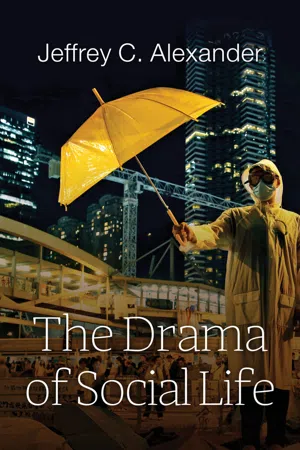Revolutionary social movements tell the world that their eventual triumph is inevitable, and radical theorists conceptualize this necessity as determined by the unstoppable force of material interest. It’s a very different story inside revolutionary movements, however. They are dramaturgical engines. Let Marx pretend that the revolution responds merely to objective interest, depicting workers as proto-scientists following rational, instrumental plans. Lenin knew better. Attacking the fallacy of economism, Lenin put ideology at the center of revolutionary mobilization, organizing Bolshevism as an active, pragmatic, top-down party in the service of socialist ideas.3 Antonio Gramsci dubbed the Communist Party the “modern prince,” taking his cue from Machiavelli.4 In 1917, when Lenin’s revolution succeeded, Gramsci created a double entendre banner headline, “Revolution against Capital” in Avanti, the Italian revolutionary newspaper he edited, ironically suggesting that Marx’s scientific theory could never have predicted it. Gramsci knew that the revolution in Russia had succeeded not because of the laws of capital but because of the dramaturgical powers of the Bolshevik Party.5
The textual background and its limits
In their radical reinterpretation of Maoist strategy in the decades preceding the Chinese revolution, Revolutionary Discourse in Mao’s Republic, David Apter and Tony Saich transformed this line of cultural Marxist thinking into a poststructuralist frame. Moving away from a reductionist, ratiocinative conception of ideology toward a Geertzian, thickly semiotic one, they conceptualize the revolutionary organizer as a storyteller, “an agent with a special ability to lift the burden of storytelling from the shoulders of the individual by enabling that person to share it with others [so that] the property of the story becomes the property of the discourse community.”6 The story-teller-in-chief of the Chinese revolution, Mao Zedong, culled “myths, stories, texts, and logical prescriptions” from Chinese and Western traditions, pulling “out of the terrible circumstances and conditions of life prevailing in China” the vision of a “utopic republic.” With this vision, Mao “was able to refract and generate a field of force, at the epicenter of which he becomes a teacher.”7
Apter and Saich are forcefully anti-materialist and anti-“rational actor,” but their culturalizing account of the revolutionary process doesn’t go nearly far enough. Their political discourse analysis presents the Chinese revolution as an “exegetical creation.” But seeing such an extraordinary event merely as an “express embodiment of a structure of ideas” ignores the performative challenges that must be met in real time, the complex process of acting out ideas and getting an audience to believe them. “For stories to be shared with others,” Apter and Saich acknowledge, “people must want to listen,” but conceptualizing just how to get folks to want to listen is the thing.8 To suggest simply “words themselves became performatives” keeps us in the dark, inside philosopher J. L. Austin’s narrowly linguistic black box, where performativity is achieved by speaking itself. The dramaturgical process that sets the stage, the directing process that organizes mises-en-scène, the skillful creativity of actors or the lack thereof, the organizational and symbolic challenge of creating the appearance of seamless fusion between audience, actors, and animating script – all this remains to be conceived. Clearly, Mao had the ability of “communicating to listeners a feeling of privileged access to the interpretive wisdom of a mind in motion,”9 but the communicating process, the feeling of privileged access, even the attribution of wisdom – all need attention.
Apter and Saich offer a tantalizing glimpse into the black box of dramaturgy when they situate Mao’s storytelling inside the caves of Yan’an, where the Chinese Communist movement went into hiding after their “Long March” to escape the ruling Guomindang Party in 1937–38:
Narrating the stories and writing the texts, [Mao] makes himself part of the process. Everything associated with his person also becomes significant – the long hair, the long fingers, the baggy clothes, the earthy expressions, the fact that he scratches himself with the same fingers that hold the brush. [Mao] was very careful to arrange himself to project just the image he wanted.10
In the end, however, Yan’an is portrayed simply as “a semiotic space” and Mao as a leader “in sole possession of an inversionary discourse capable of generating public support,” an “interior system of codes, symbols, and icon” that proved “capable [of] unifying a diverse community.”11 But was discourse itself sufficient to unify a fragmented and demoralized community? What actually transpired in the caves of Yan’an? What allowed the ideological revivification process to unfold successfully? “Using metaphors and metonymies Mao creates a code,” Apter and Saich argue, “that enables the narrative to endow gestures, acts, dress, dwelling and above all language and literacy with the power of signifiers.”12 But much more must also have been involved – creative, unscripted gestures and movements, props and staging, official and dissenting interpretations, unresponsive and silent audiences, but also cries of delight.
That “an individual has become assimilated into a discursive community”13 is certainly a useful indicator of cultural-pragmatic success, but what exactly does it measure? What we need to know is how the fusion between speaker and audience is actually accomplished. It is not enough to suggest “a person has absorbed and internalized the ritual.”14 How a contingent and labile performance comes to be regarded as an absorptive, repetitive, and solidarizing ritual is what’s empirically and heuristically at stake. For texts to be internalized, performance must be felicitous. Apter and Saich note “the revolutionaries’ claim that both the [Marxist] dialectic and the system of [Maoist] ideas were always there, an enduring authenticity waiting to be perceived.”15 Claims of authenticity, however, must be dramatically redeemed.
Authenticity is not something already there, waiting to be...
